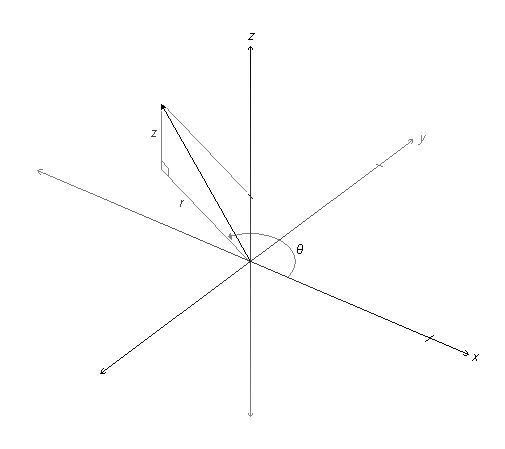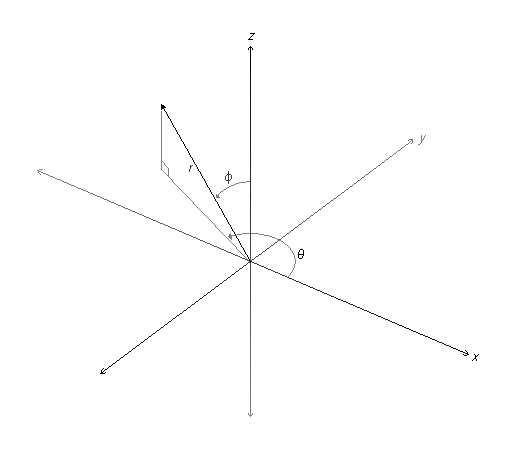
Advanced mathematics in plain English
You are here: Mathematics → Vectors → Other Coordinate Systems
Other coordinate systems
Although it's generally convenient to describe vectors in terms of x, y and z (Cartesian) coordinates, this isn't the only system you can use. For example, you could describe a 2 dimensional vector in terms of magnitude and angular direction, which is just as good as specifying x and y coordinates (since you can then use the magnitude and direction to work out the x and y components anyway). Basically, you need a set of two scalars as coordinates to describe a 2 dimensional vector, or three coordinates to describe a 3 dimensional vector, or 4 for a 4-vector, etc...Polar Coordinates
A very common system for describing 2 dimensional vectors is to use polar coordinates. Basically, instead of x and y, we use r and θ. (θ is the Greek letter theta. Sometimes φ - the Greek letter phi - is used instead.)In this system, r stands for the magnitude of the vector, and θ stands for its direction, in the form of an angle measured anticlockwise from the direction of the positive x axis, and generally given in units of radians.

In three dimensions, you need three sets of coordinates. The Cartesian system uses x, y and z, but the following two alternative extensions of two dimensional polar coordinates to three dimensions are equally good.
Cylindrical Coordinates

Spherical Polar Coordinates

Beware: many people use a different convention for spherical coordinates, where the meanings of theta and phi are swapped. This is the only difference, though.
Home

This work by http://plainenglish.info is licensed under a Creative Commons Attribution 4.0 International License.
You may copy this work, however you must always attribute this work if you do so.

This work by http://plainenglish.info is licensed under a Creative Commons Attribution 4.0 International License.
You may copy this work, however you must always attribute this work if you do so.